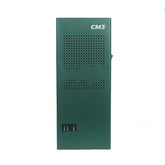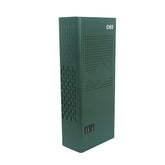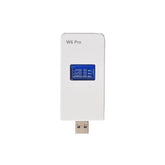Frequency Range and Principles of Cell Phone Signal Jammers
Worried about incomplete blocking? A complex signal environment, limited budget? Worried about damage or a short device lifespan? Want to block only one signal but worry about affecting other frequency bands? Worried about being discovered by others? Worried about the jammer's appearance and impacting the indoor environment?
Topsignaljammer jammers effectively block CDMA (China Telecom), GSM (China Mobile, China Unicom), SCDMA (Netcom), DCS (1800MHz), PCS (1900MHz), PHS (China Telecom), 3G, 4G, and 5G mobile phone signals, 2.4G Wi-Fi, 5.8G Wi-Fi, UHF, and VHF walkie-talkie signals, among other mobile communication signals.
The principle of radio communication: Within a certain frequency range, mobile phones and base stations connect via radio waves, transmitting data and sound at a specific baud rate and modulation method.
The communication principle of a cell phone signal blocker: During operation, the jammer scans from the low end of the forward channel frequency to the high end at a constant speed. This scanning speed can create garbled signals in the mobile phone's incoming signal, preventing it from detecting legitimate data sent from the base station and preventing it from establishing a connection. The phone may display symptoms such as searching for a network, no signal, or no service.
Features of the Mobile Phone Signal Blocker:
1. Only blocks the downlink frequency of the base station, without affecting the uplink frequency.
2. Environmentally friendly, with electromagnetic field strength far below the standard, harmless to the human body.
3. Simple operation: Simply install the antenna correctly and connect to the power source for automatic operation.
4. Shields only mobile phone signals, without affecting the normal operation of other electronic devices.
5. Shields only mobile phone signals and wireless cheating signals within the exam room, without interfering with mobile phones outside the exam room or the base station.














